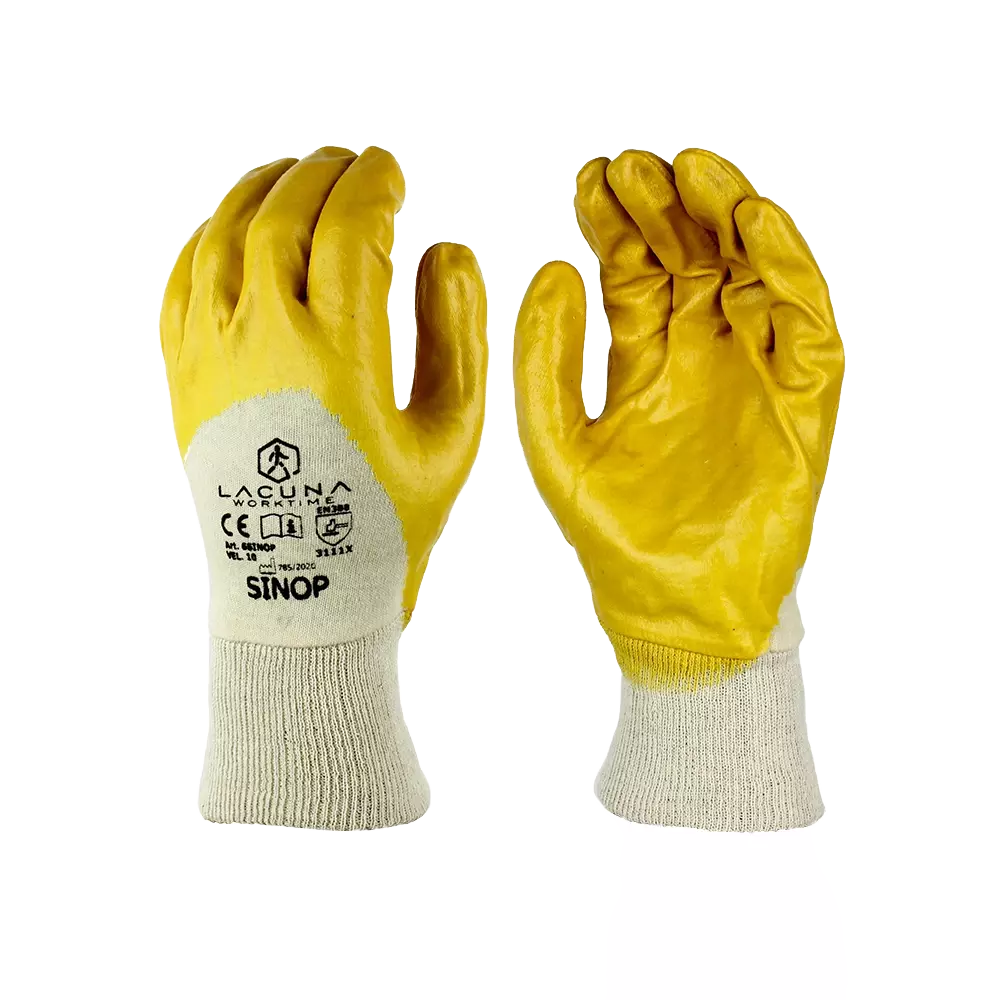
Features You'll Love

EN 388 · Abrasion Resistance Level 3, Cut Resistance, Coup Test Level 1, Tear Resistance Level 1, Puncture Resistance Level 1
Provides good resistance against scraping, scratching, and rubbing on rough or abrasive surfaces.
Provides minimal protection against cuts from a rotating blade under constant, low force.
Provides basic resistance against snagging or catching on rough surfaces, offering minimal protection from tearing.
Provides basic protection against punctures from blunt objects like splinters, not sharp points like needles.
Lacuna
SINOP Glove with yellow nitrile coating size 10, 12 pairs
SINOP Glove with yellow nitrile coating size 10, 12 pairs
4.7 / 5
21,77 €
Price per 12 pairs
1,81 € / pair
Choose size
Shipping fee is 7,95 € for orders under 80,00 €
Features You'll Love

EN 388 · Abrasion Resistance Level 3, Cut Resistance, Coup Test Level 1, Tear Resistance Level 1, Puncture Resistance Level 1
Provides good resistance against scraping, scratching, and rubbing on rough or abrasive surfaces.
Provides minimal protection against cuts from a rotating blade under constant, low force.
Provides basic resistance against snagging or catching on rough surfaces, offering minimal protection from tearing.
Provides basic protection against punctures from blunt objects like splinters, not sharp points like needles.
Product description
Description: Economical wet grip glove with elastic cuff and yellow nitril coating
Material: cotton interlock support
Coating: 3/4 nitril
Norm: EN 388 3111X, EN 420
Size: 10
Packaging: 10 pairs
Old item code: 9320
Barcode: 3859890195481
Unite of measure: pair
Packaging/minimum order quantity: 12
Full box quantity: 120